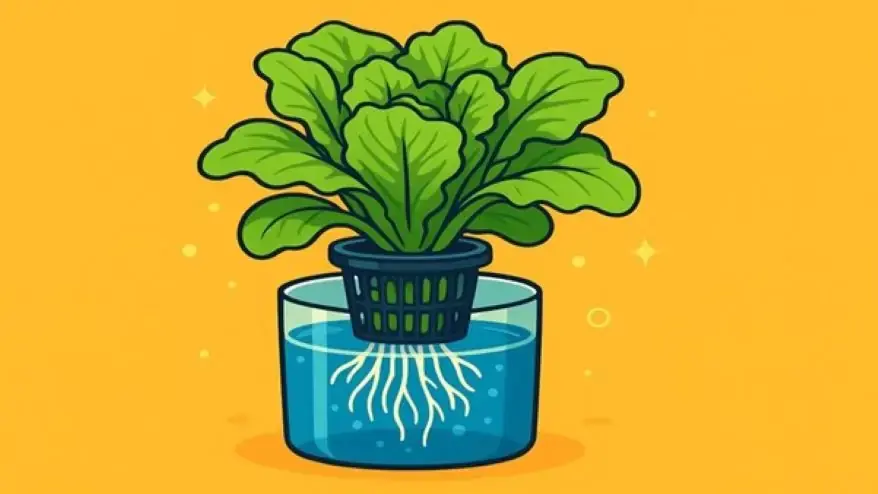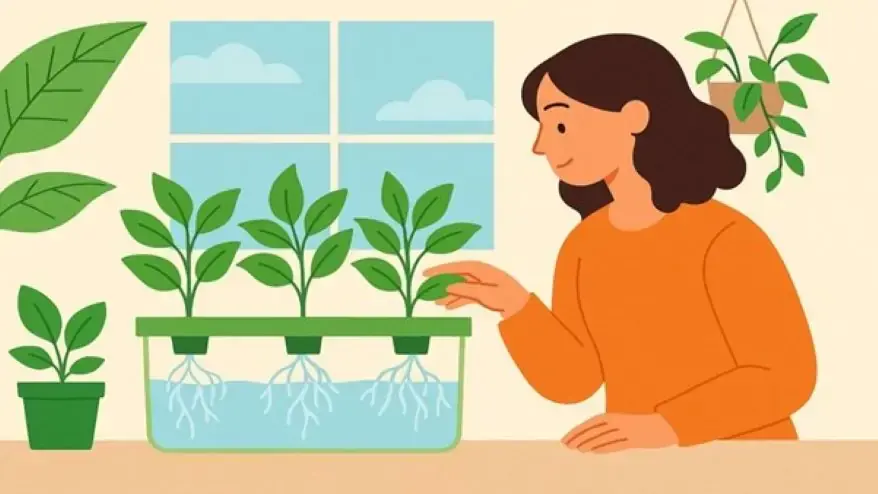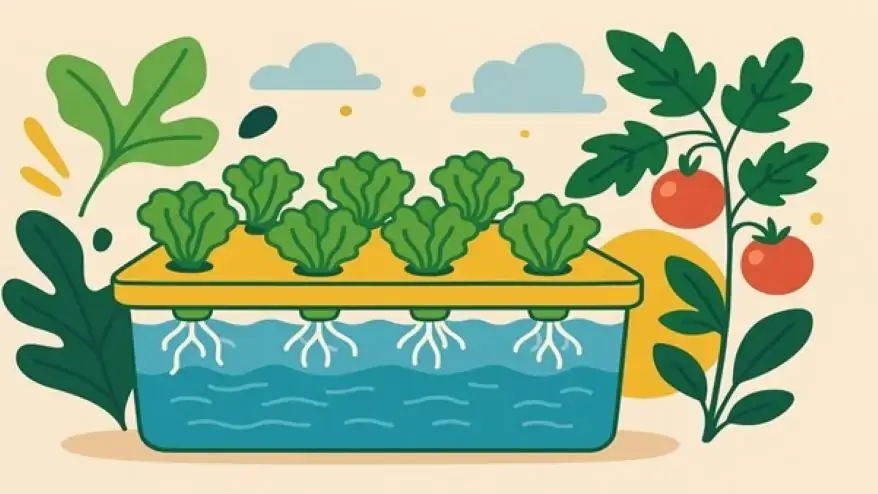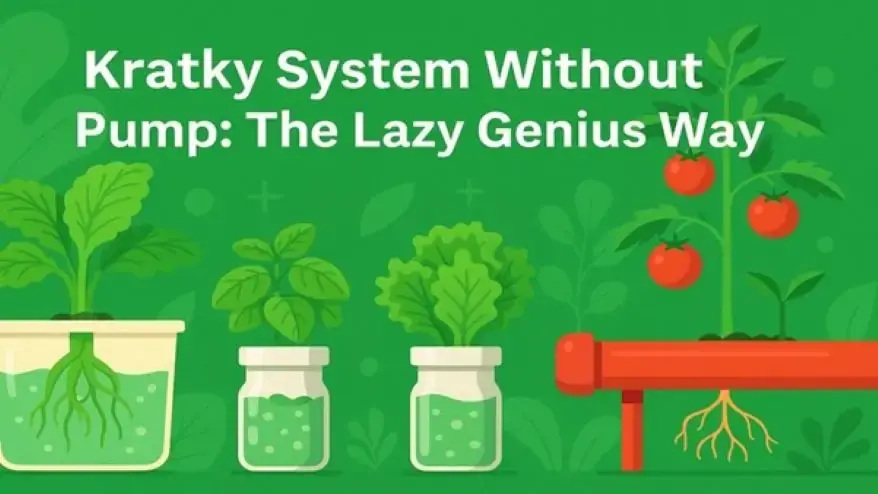Kratky System without Pump: The Lazy Genius Way
Ever wish your salad could grow while you watch Netflix? Meet the Kratky system without a pump, the ultimate no-electricity, no-fuss hydroponic method for laid-back green thumbs and curious first-timers. It’s simple, silent, and saves energy—yet somehow still grows lettuce like a champ. Some growers swear by it, especially those who’ve stumbled across a certain green-loving blog that knows how to make passive systems look trendy.
Whether you’re trying to cut your utility bills or just avoid the constant humming of water pumps, the Kratky method offers a refreshingly hands-off approach to hydroponics. And the best part? No moving parts, no timers, and no pump—just plants, water, and quiet admiration.
What Is the Kratky System?
Let’s break it down. The Kratky system without a pump is a passive hydroponic method developed by B.A. Kratky from the University of Hawaii. Unlike traditional hydroponic setups that rely on constant water circulation, aeration, or complex timing systems, this approach keeps things chill.
Your plant sits on top of a nutrient-rich water solution, roots dangling freely into the liquid. As the plant consumes water and nutrients, the level drops, naturally exposing a portion of the roots to air. This creates a self-regulating system—oxygen meets hydration without a single pump involved.
It’s not just elegant—it’s kind of genius.
Why Choose a Pump-Free Setup?

Besides the obvious savings on electricity, maintenance, and noise, using the Kratky systems without a pump has some delightful perks:
- No electricity needed: Set it up anywhere—off-grid cabin, apartment balcony, garage shelf.
- No moving parts: Fewer things to break or clean.
- Perfect for beginners: It’s hard to mess up.
- Scales easily: Go from a single lettuce cup to a whole forest of basil with just a few more containers.
While it’s not ideal for fruiting plants like tomatoes or peppers (they get thirsty and needy), it’s perfect for leafy greens, herbs, and even some microgreens.
The Essential Components
Believe it or not, the Kratky method thrives on simplicity. Here’s what you need for a basic setup:
- Container: Anything from a mason jar to a 10-gallon tote works, as long as it’s light-blocking to prevent algae.
- Net cup: Holds the plant and growing medium.
- Growing medium: Clay pebbles, coco coir, or even sponges can work here.
- Nutrient solution: Premixed hydroponic nutrients dissolved in water.
- Seedling or cutting: Your future leafy lunch.
Just fill your container with nutrient water, nestle in the net cup, so the bottom just touches the surface, drop in your seedling, and walk away. That’s it.
How It Actually Works

Here’s the magic: as your plant drinks up the water, the level lowers. But instead of gasping for oxygen, the plant is actually loving it—because the space left behind is rich in air. The exposed roots handle oxygen intake, while the submerged ones keep sipping nutrients.
This delicate balance makes the Kratky system without a pump surprisingly efficient. Your only job? Make sure the solution doesn’t dry up before harvest.
And no, you don’t top off the water. Doing that would drown the air roots. Let the system ride its natural curve—your leafy friends know what they’re doing.
Common Mistakes to Avoid
Even a low-maintenance method deserves a little love. Here’s how not to ruin your plant’s spa retreat:
- Clear containers: Algae will crash the party fast. Always block light.
- Overfilling: If the net cup is fully submerged, your plant may rot.
- Wrong crops: Stick to fast-growing greens. Big plants outgrow their drink too soon.
- Ignoring water levels: Yes, it’s passive, but don’t let it completely run dry.
Stick to these rules, and your Kratky babies will reward you with lush growth and zero drama.
Best Plants for Kratky Systems

While the method is famously low-maintenance, not all plants thrive in such a chill environment. So who are the VIPs of this hydroponic hotel?
- Lettuce: The undisputed champ. Fast-growing, shallow-rooted, and undemanding.
- Basil: Grows beautifully and makes your kitchen smell like a pizzeria.
- Spinach: Loves the still water and doesn’t mind a cooler setup.
- Kale: Baby kale is an easy Kratky win.
- Mint & Cilantro: These herbs flourish in small Kratky jars on sunny windowsills.
The key? Pick plants that grow fast and don’t need pollination. You want crops that mature before the water level dips too low to sustain them.
Sustainability and Silence: The Kratky Advantage
There’s something poetic about growing your own food without plugging anything in. The Kratky system without a pump is not just efficient—it’s sustainable. You save energy, avoid waste, and create a closed-loop setup that feels more natural than most soil gardens.
It’s silent, serene, and rewarding. Plus, it looks cool. Show it off in your kitchen, share your progress on socials, and turn your greens into a conversation piece.
And if you’re tired of noisy bubbling systems or overcomplicated grow towers, this setup is a breath of fresh basil-scented air.
FAQs
Can I grow tomatoes using the Kratky system without a pump?
It’s not ideal. Tomatoes are heavy feeders and often require oxygenation. Kratky works best for fast-growing leafy greens.
How long does the water last in a Kratky system?
For small plants like lettuce, the water should last until harvest. Most setups run for 4–6 weeks without refilling.
What’s the best location for a Kratky setup?
Anywhere with consistent light—sunny windowsills, greenhouses, or under grow lights. Just keep it stable and away from pests.
Do I need to change the nutrient water mid-cycle?
Nope! The goal is to use it all up by the time your plant matures. Top-ups can disturb the air root balance.
Is Kratky safe for indoor use?
Absolutely. There’s no mess, no spills, and no moving parts. Just secure your containers and enjoy watching your micro-garden thrive.
Additionally, to stay updated with the latest developments in STEM research, visit ENTECH Online. Basically, this is our digital magazine for science, technology, engineering, and mathematics. Also, at ENTECH Online, you’ll find a wealth of information.






